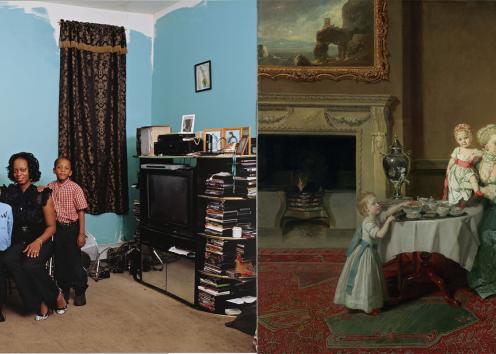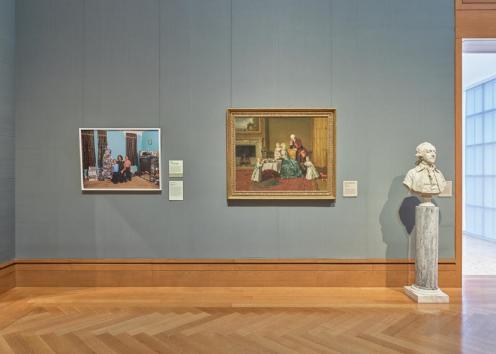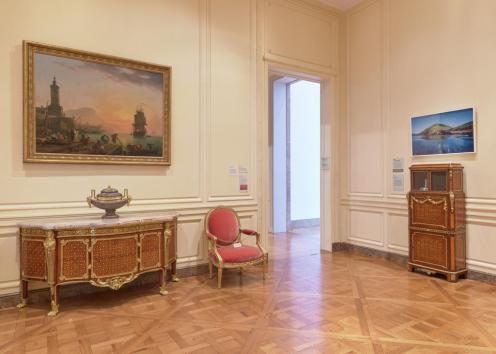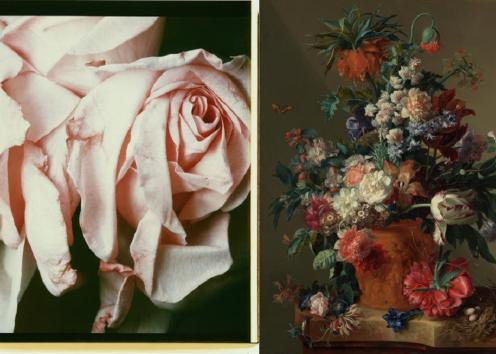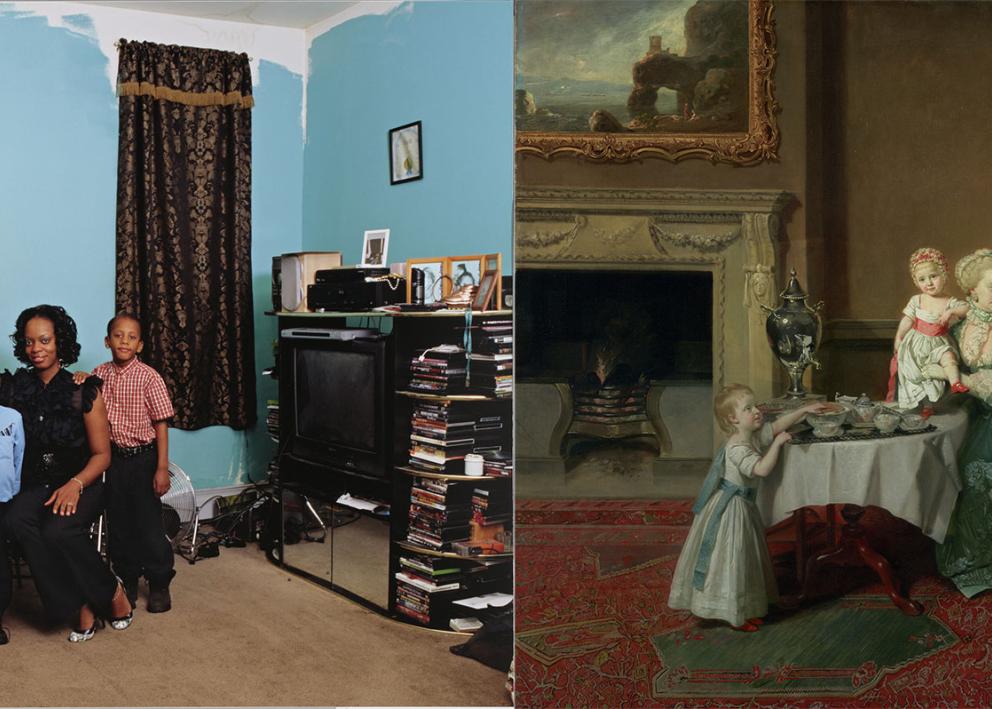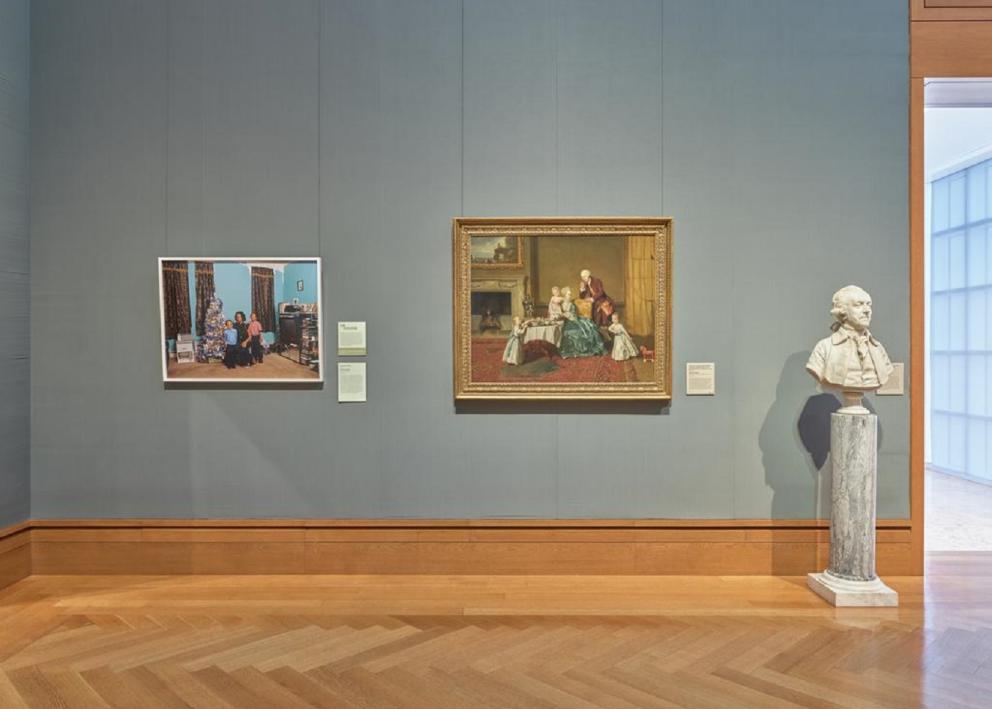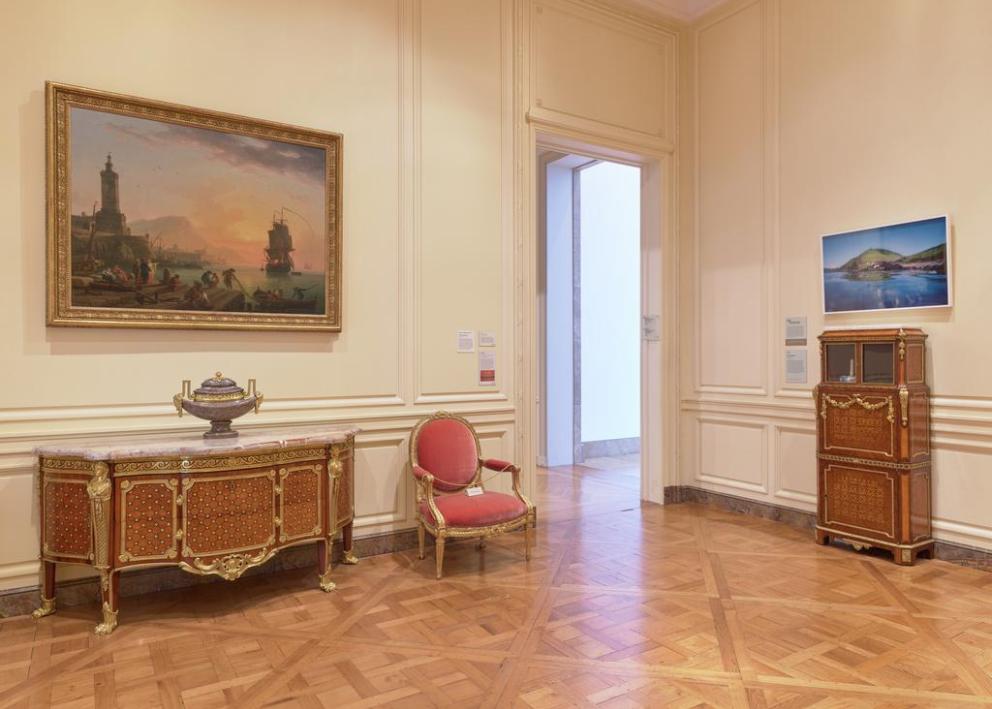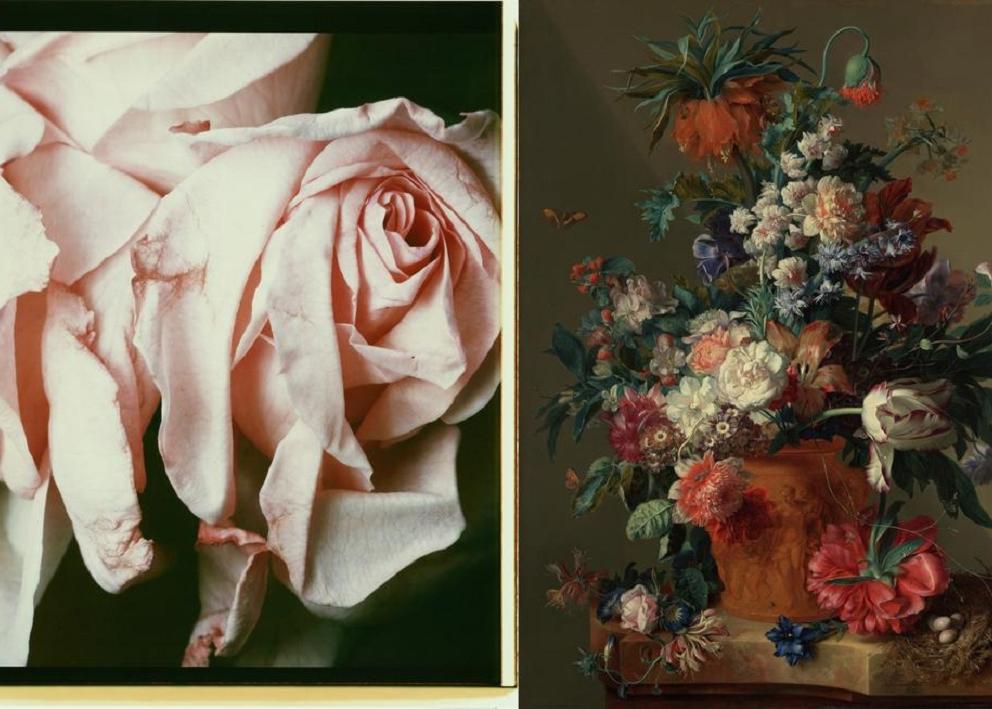Student Spotlight: Indira García Varela
Last summer, Indira traveled to Los Angeles to visit the Getty Museum's "In Dialogue" installation. Her visit and interviews with its curators contributed to her dissertation research regarding the connection between painting and literature during the 15th, 16th and 17th centuries in Spain. Indira wrote a short reflection of her trip:

Untitled, 2003, Pinar Yolaçan. Chromogenic print. Getty Museum, Gift of Dale and Doug Anderson, 2009.101.1. © Pinar Yolaçan and Head of a Woman, about 1654, Michael Sweerts. Oil on panel. Getty Museum, 78.PB.259

Venus and Adonis, about 1555–1560, Titian (Tiziano Vecellio). Oil on canvas. Getty Museum, 92.PA.42 and Death of Adonis, 2000, Adi Nes. Chromogenic print. Getty Museum, Gift of Joyce and Ted Strauss, 2016.55. © Adi Nes, courtesy of the artist and Jack Sha
Dear colleagues,
I am happily sharing with you the progress I made with the help of the endowment and the Ted Johnson Award I received this summer 2022. With both financial help, I was able to travel to Los Angeles California and visit the Getty Museum. During my visit, I had the opportunity to experience the installation In Dialogue, an exhibition that reflects and carries concepts of my dissertation. During my visit to the Getty, I was also able to interview two curators involved in conceptualizing and organizing the installation as well as one of the print conservators who was also part of In Dialogue. The visit and the interviews added enough information to my research to continue with my endeavor to understand the connection between painting and literature during the 16th, 17th and 18th centuries in Spain but also the relation with some of the present art production in photography media.
The visit to the Getty helped me to continue developing my understanding of the circulation of the arts, particularly regarding what is accessible to the public and how this accessibility affects new visual productions. One of the main topics of my dissertation answers the questions of how and why readers are affected by the visuality of the arts in its different media, for example how painting affects poetry and vice versa. My thesis is that what remains in memory is reorganized and produces new artifacts and imaginary, reorganized narratives only because and through the contact receptors have with arts, either by reading or by gazing.
My fieldwork and research at the Getty Museum over the summer gave me an inside of how the collection In Dialogue is accessible and why there are some artworks that are not. The curatorial process is one of the fundamental bases of my dissertation, exhibitions or exhibited art are now designed to create a narrative that carries the ideology transmitted through the gaze, and what stays in our memory reproduces new or fresh compositions. I learned that In Dialogue couldn’t be possible without making sure the life condition of the art pieces and without taking into consideration the possible conditions in the future, meaning that the Conservation department is also fundamental to determining what is accessible to the public. Circulation today depends on the life of the art pieces, which in the past was almost the same as today, but with the difference that the circulation of the arts depends on different situations. However, in the end, institutions are in control of the narratives and by consequence of what we have access to.
Thanks to this summer research, I am writing the first chapter of my thesis, which is about the circulation of Titian Poesies within the Spanish territories; condemned by the Inquisition, the six paintings, which were made in relationship with Ovid's Metamorphosis, were either enclosed in a space within the Spanish crown or exile to other target territories for the Spanish Crown. Since they were made for the chambers of Felipe II, Poesies had been exposed to a different audience but always receptors from the court. As Graciela Montaldo mentioned in Museo del consumo. Archivos de la cultura de masas en Argentina, “por un doble carácter de las artes, el archivo se convierte en un dispositivo que a la vez que reproducía la hegemonía generaba nuevos espacios de participación”. The double character in arts is always in relation to the meaning or state of the object to be circulated. Poesies were not only infatuations for the eye but also objects which jeopardized an imaginary social order throughout the House of Habsburg. Nonetheless, they circulated and kept alive the irrational and rational passions of Ovid’s gods until our time.
In Dialogue is an installation, an example of flowing and keeping alive the inherited traits found within pieces of art, either ideological or aesthetical.

"The different artworks placed next to each other arouse meaningful discourses about continuous social issues and/or about art itself. A mirror from the 18th/19th century next to a photography, 21st century print reminds its audience that photography is just lenses of perspective and that mirrors are distortions of reality."
Titian's painting reminded the House of Habsburg of the fragility of body and mind, subject of the second chapter of my dissertation, keeping alive ideals translated from Ovid’s poem.
I truly learnt this summer that if we understand and experience art collections and the process of their transmission, we would be able to understand, from a closer perspective, how institutions work, and we will be able to grasp how and why art and literature spread in the past. I am happy and grateful that I had the opportunity to travel and visit one of the most significant collection institutes, learning and adding to my dissertation theory and experience. I want to also acknowledge the generosity and the welcome that the curators Antares Wells and Arpad Kovacs gave me and for the interview as much gratitude to Ronel Namde who gave me access to the amazing collection of the Getty Museum.
Sincerely,
Indira Yadira Ariana García Varela
